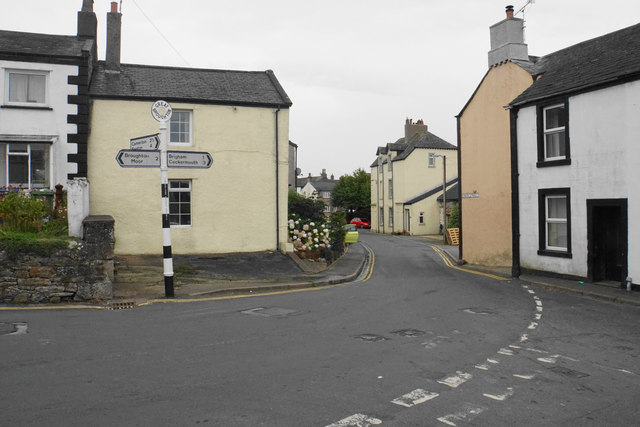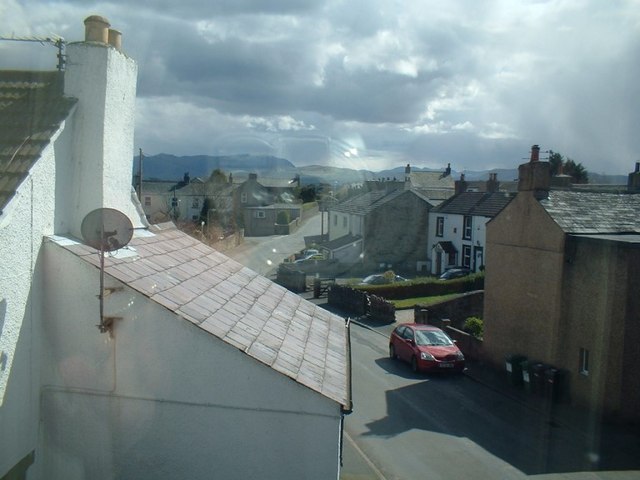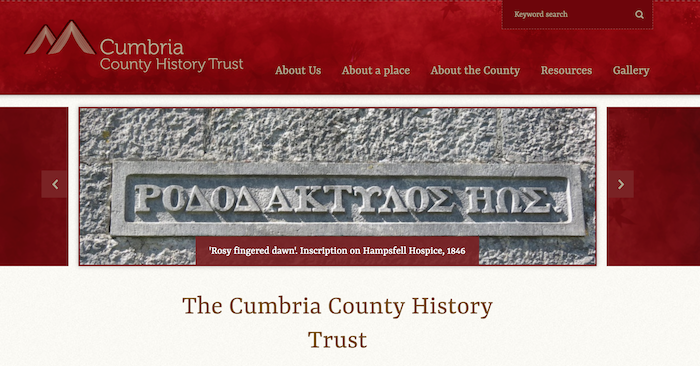Topics > Civil Parishes in Cumbria > Broughton Civil Parish, Cumbria
Broughton Civil Parish, Cumbria
Parish boundaries may have changed - for the latest map see the Parish Council or Cumberland Council.
About the Parish
| Main Settlements: |
The villages of Great Broughton and Little Broughton |
| Population: |
1,766 (2021 Census) 1,704 (2011 Census) 1,727 (2001 Census) |
| Area: | 5.5 km2 |
| Parish Council: | Broughton Parish Council |
| Formed: | Established in 1898 when Great Broughton CP and Little Broughton CP were abolished to form Broughton CP and Broughton Moor CP. By that time, the population of Broughton Moor had grown significantly in association with coal mining. |
| Unitary Authority: | Cumberland Council |
| Ceremonial County: | Cumbria |
Historical |
|
| Ancient Townships |
Townships became civil parishes in their own right in 1866 (see below). |
| Ancient Parish: |
Bridekirk Parish (St. Bridget) Ancient parishes refer to the parishes before the split between ecclesiastical (church) and civil parishes in the 19th century. They had a parish church and often were composed of multiple townships and chapelries. In many cases, townships and parishes were originally based on the territory of manors from the feudal system during medieval times. Civil parishes were created following the Poor Law Amendment Act 1866, in which Church of England parishes, extra-parochial areas, townships and chapelries, became "civil parishes" which could set their own poor rate (tax). Then the reforms of Local Government Act 1894 established elected civil parish councils (or parish meetings for parishes with less than 300 residents) and created urban and rural districts. Boundaries of parishes and civil parishes may have changed over time. |
| Ancient District: |
Allerdale below Derwent (ward) |
| Poor Law Union: |
Cockermouth Poor Law Union, formed in 1838. Cockermouth Union Workhouse was located by Sullart Street in Cockermouth, opening in 1841. This replaced smaller existing workhouses in Cockermouth, Maryport and Workington. Under the Poor Law Amendment Act of 1834 parishes were grouped into Unions, each of which had to build a workhouse if they did not already have one. It ended the old system of locally provided poor relief which had come under strain as numbers out of work grew, following increasing mechanisation of agriculture and the economic downturn after the Napoleonic Wars, along with changing social attitudes. The workhouse provided those unable to support themselves financially with accommodation and work. Inmates were generally segregated into men, women, boys and girls. The workhouse system was abolished by the Local Government Act 1929, but many workhouses lived on as ‘Public Assistance Institutions’ until the National Assistance Act 1948. |
| County: |
Cumberland, until 1974, then: Cumbria, which was created on the 1st of April 1974, following the Local Government Act 1972. The new county absorbed Cumberland and Westmorland, and added some parts of Lancashire and the West Riding of Yorkshire. Cumbria County Council was abolished in 2023 and replaced by 2 new Unitary authorities. Cumbria remains a ceremonial county; retaining ceremonial boundary and the roles and responsibilities of the Lord Lieutenant and High Sheriff of Cumbria - based on 'The Cumbria (Structural Changes) Order 2022'. |
|
District Council: |
Cockermouth Rural District (1894 - 1974) Allerdale Borough (1974 - 2023) Created by the Local Government Act 1972. Allerdale absorbed the former municipal borough of Workington; the urban districts of Maryport, Cockermouth and Keswick; and the rural districts of Cockermouth and Wigton. Allerdale and the 5 other district councils of Cumbria, along with the county council, were abolished as part of local government reorganisation in 2023; and replaced by two unitary authorities on 1st April 2023. |
|
Unitary Authority: |
Cumberland Council was created on the 1st April 2023. The 'new' Cumberland unitary authority area includes most of the historic county, with the exception of Penrith and it's surrounding area, which is part the 'new' Westmorland and Furness unitary authority. |
See also: ![]() Historic Buildings and Monuments in Broughton Civil Parish. Note: listed buildings are generally the responsibility of the county council / unitary authority, rather than the parish council.
Historic Buildings and Monuments in Broughton Civil Parish. Note: listed buildings are generally the responsibility of the county council / unitary authority, rather than the parish council.

Co-Curate Page
Great Broughton
- Overview About Great Broughton Map Street View Great Broughton is a village in the Allerdale district of Cumbria, located by the River Derwent, about 2½ miles north-west of Cockermouth. Historically, …

Co-Curate Page
Little Broughton
- Overview About Little Broughton Map Street View Little Broughton is a village in the Allerdale district of Cumbria, located about 2½ miles north-west of Cockermouth. Historically, Little Broughton was a …

from http://broughtonparishcouncil…
Broughton Parish Council
- A community website for Broughton Parish Council, covering Great & Little Broughton in Cumbria
Added by
Simon Cotterill

from https://www.cumbriacountyhist…
Broughton
- "CP in Bridekirk parish, Allerdale below Derwent Ward, Cumberland, created 1898 from bulk of townships of Great and Little Broughton. Broughton Moor CP created at same date, covering mining settlement …
Added by
Simon Cotterill


Co-Curate Page
Great Broughton
- Overview About Great Broughton Map Street View Great Broughton is a village in the Allerdale district of Cumbria, located by the River Derwent, about 2½ miles north-west of Cockermouth. Historically, …

Co-Curate Page
Little Broughton
- Overview About Little Broughton Map Street View Little Broughton is a village in the Allerdale district of Cumbria, located about 2½ miles north-west of Cockermouth. Historically, Little Broughton was a …

from http://broughtonparishcouncil…
Broughton Parish Council
- A community website for Broughton Parish Council, covering Great & Little Broughton in Cumbria
Added by
Simon Cotterill

from https://www.cumbriacountyhist…
Broughton
- "CP in Bridekirk parish, Allerdale below Derwent Ward, Cumberland, created 1898 from bulk of townships of Great and Little Broughton. Broughton Moor CP created at same date, covering mining settlement …
Added by
Simon Cotterill






